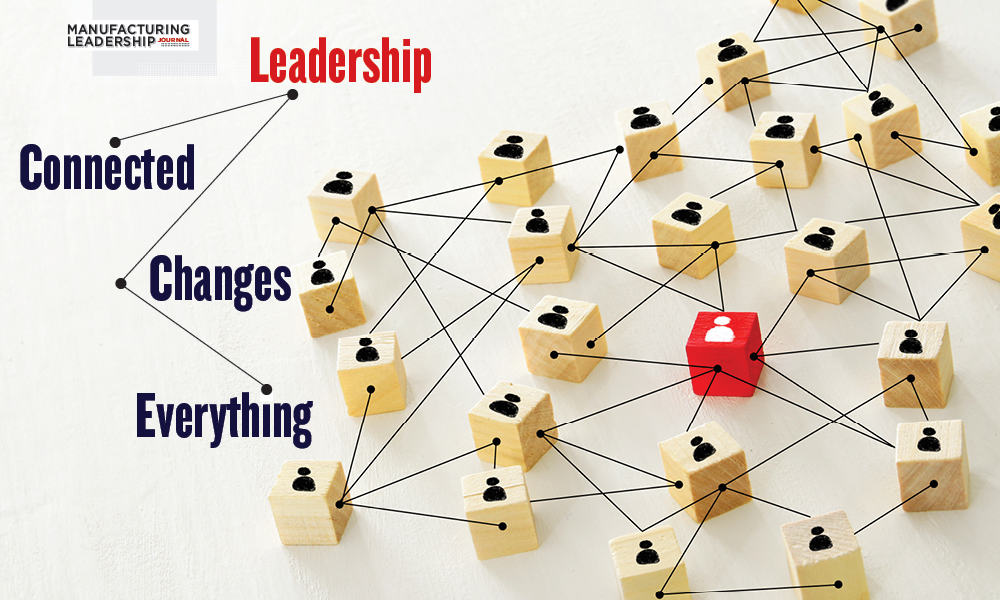
Combining the idea of agile-based connected leadership with Delta Leadership’s Six Domains of Leadership Model can create a culture of leadership well suited to a time of disruption.
By Anirban Bhattacharyya

The advent of COVID-19 is demanding that organizations reinvent the way they conduct business. Today’s challenging times require a more outcome-based model, focusing first on the end goal and then executing backwards to the present.
This new thinking requires a shift toward more bold, resilient, and connected leadership. The monumental challenges the year 2020 has brought now require leading businesses and organizations to discover their collective A game in order to survive and flourish.
Traditional ways of operating have never been put to a greater test. Longstanding methods of managing and developing a company’s human resources no longer seem as viable. As companies recognize the need to embrace the fourth industrial revolution, the theme of organizational connectivity – among people, processes, data, and machines –has now been pushed to the forefront of business agendas.
How ironic that as technology advances at warp speed, the need for connected leadership of a community of connected employees has never been more important. It is critical that a connected 4.0 mindset is now applied to manufacturing and non-manufacturing businesses and organizations alike.
This provocative approach automatically drives the need to establish persona-based models of all stakeholders prior to execution of any organization’s business model. This new way of thinking must lead by data and design. Organizations must then be ready to reimagine their operating models in direct response to the establishment of these new business models.
Some businesses have already proactively created new digital offerings. They are in the process of establishing event-driven business, operating, and information technology models. Those doing so are best prepared to address both the current crisis and its unknown aftermath.
An Agile Mindset
Connected leadership is based on an agile mindset where customer-centered business acumen is cultivated. It defines an inspirational purpose, direction, and authenticity for inside-out (organization view) and outside-in (customer view) systems of the organization. This leads to sharing power and creating a collaborative environment. It sets the stage for contextualizing and prioritizing the state of the business especially during the pandemic. At the end, this creates an environment to run a responsible business, keeping planet, profit, and people in mind.
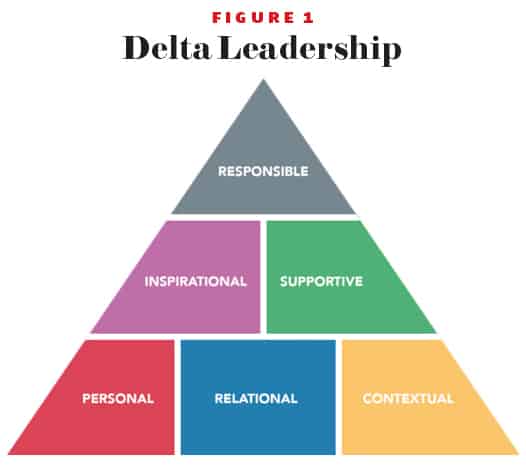
Connected leadership is no longer a goal; it is a requirement for business success going forward in an M4.0 world. There are no exceptions. All of today’s leaders are being challenged by this new normal. As business and offices reopen, workforce optimization and employee safety are at the forefront of business agendas. In retail, we will likely see cognitive robots replacing humans when it comes to mundane routine work. In manufacturing, mandatory workforce special distancing will be having to exist without postponing customer-demanded due dates.
Suppliers will be equally challenged as they will be forced to reduce cycle times from receipt to delivery. That will require exception-driven execution. Tearing down the walls with value chain partners while protecting invaluable intellectual property to deliver a more robust supply chain will be a daunting task in the not-so-distant future.
Establishing a robust model to execute the new normal of business will demand that leaders stay connected within and outside the organization. They must listen to and motivate their employees even as everyone in an organization, from senior management to the newest operations hire, will be asked to think differently. Small cross-functional teams, reinforced accountability, and a focus on high-quality decision-making techniques will be required organizational disciplines.
The Role of Gamification
Gamification promises to become an effective way to execute the tenets of connected leadership. Simplifying goals, establishing a daily leadership board, encouraging all stakeholders to document innovative ideas, and maintaining a flat culture in a time of rapid change can be achieved through a gamified dashboard.
Gamified leadership begins with helping employees identify the paths needed to successfully address the challenges posed. As employees successfully navigate the levels on their journey to success, they are rewarded with tangible benefits (scores, badges, recognition) that improve morale and provide immediate feedback. Leaderboards provide much needed data while encouraging healthy competition. Collaboration naturally results, especially when the challenges are addressed collectively by assigned or organically developed teams.
Intelligent, effectively executed gamification encourages and results in innovation, a more connected company culture, and an increased bottom line. The information gleaned from this approach enables data-driven leadership that can be further fueled by artificial intelligence, machine learning, and design thinking.
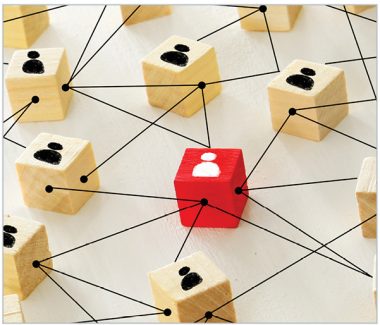
“Connected leadership is based on an agile mindset where customer-centric business acumen is cultivated.”
The Delta Framework
The Six Domains of Leadership Model (SDLM) is a research-based model created by Duke University professors Sim Sitkin and Allan Lind. Their initial research identified leadership as the effective exercise of influence based on behaviors identified in social psychology, sociology, and political science. What emerged was a distinct leadership model, the SDLM, whose six domains are as follows: Responsible, Inspirational, Supportive, Personal, Relational, and Contextual. Each domain is characterized by its own subdomains and distinct effects that can form the basis for behavioral change and the development of new leadership skills. From the model, a Six Domains of Leadership 360° Survey (SDLS) was designed to provide both an individual and organizational pathway toward the creation of a culture of leadership, a culture that results in a common bond in the workplace. That bond can positively affect productivity and result in more successful outcomes.
Personal leadership focuses on the leader’s own personal leadership style. To build credibility, the leader must show a persona which drives the culture and the behavior of the organization. Relational leadership helps forge ties and creates rhythm within the organization. Contextual leadership brings specificity and a focused implementation mindset. Inspirational leadership brings optimism, hope, and an innovative culture. Supportive leadership brings an environment of acceptance, security, and efficacy. Responsible leadership, the last domain but not the least, is at the helm and drives stewardship of the organization.
The Delta Leadership survey model has generated very positive results when executed within an organization as well as with its partners (clients, channel partners, universities). The model reinforces the fact that a new strategy of gamified leadership exists at the intersection of intuition, motivation, and information. The approach confirms that collaboration builds optimism, competitiveness drives innovation and growth, and that empathy leads to a greater sense of decision-making ownership.

As technology advances at warp speed, the need for connected leadership has never been more important.
As an illustration, contextual leadership, one of the six domains, demands that those in charge address risks, challenges, and opportunities in the unique ways that each requires. Most often, the best approach is to formalize and standardize those tasks that do not require a great deal of critical thinking and gamify, to whatever extent possible, those projects that require employees to challenge themselves and their teammates to think in ways they may never have previously. Collaboration, efficiency, and innovation will absolutely result. New business models will emerge. Oftentimes, cost centers can transition to profit centers. Recognizing that, 2020 could be the year in which astute leaders begin to welcome the success that only a gamification approach can yield.
A Gamified Leadership Board
As explained earlier, gamified leadership is an application of connected leadership in the fourth industrial revolution. The above illustration depicts a dashboard where employees of an organization can find their individual performance, collaboration, and engagement status regarding their current role. Every time he/she participates in any activity, he/she scores loyalty points.
L5 (Figure 2) represents the deepest level of a connected worker’s individual dashboard. The competitive dashboard represents the next level which shows an employee’s point standing relative to their peers (Figure 3).
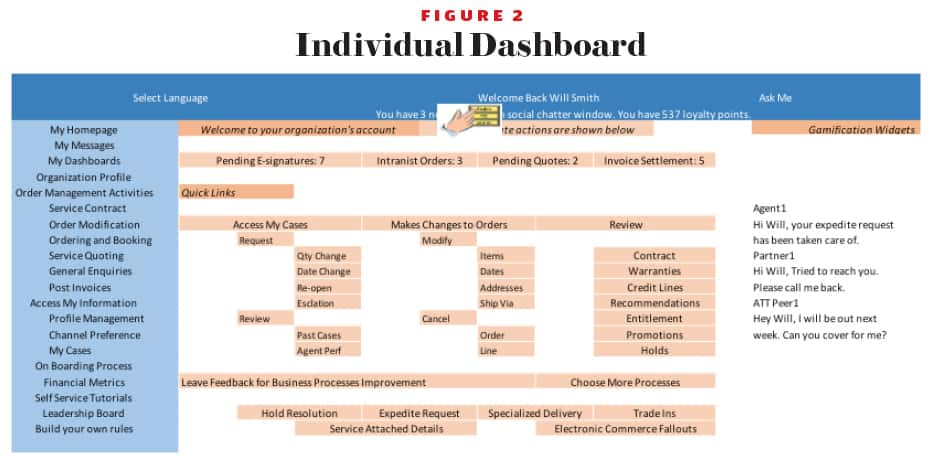
This aggregated score is then compared at an L3 stage (Figure 4).
Each business unit now submits its gamified data to the office of the Chief Operating Officer. The COO’s team creates a companywide Connected Employee feature where the leadership manages innovation to delivery. The office of COO scores every innovation, making certain that every employee is connected to the big picture of the organization.
Business continuity is critical and requires the connected planning of employees, partners, and contractors. Real time visibility, impactful evaluation of business demands, and a focus on increased agility are essential to success. For this, new normal leadership is a must. Leaders at the L2 (VPs) and L1 (CxOs) must embrace a new playbook that aligns every business and organizational component. Maslow’s hierarchy of needs is still valid. It starts from self-actualization. Leaders need to influence others while also taking responsibility for environmental change.
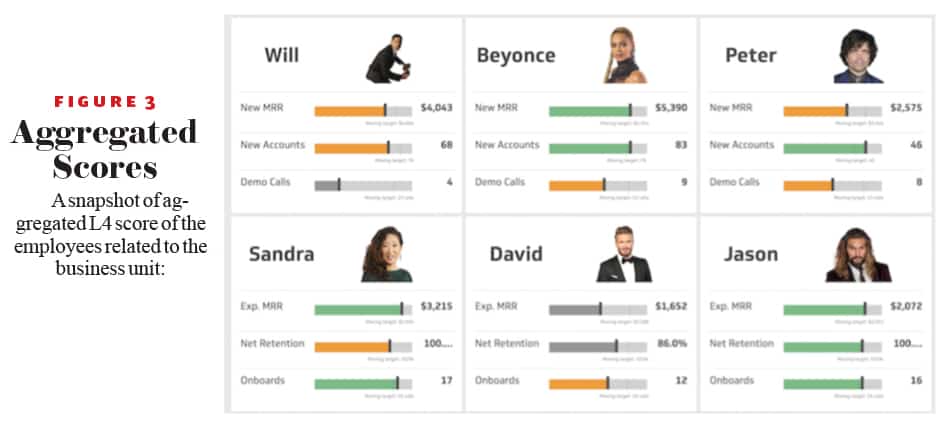
When Push Back Occurs
A mid-size precision manufacturing company looked to implement a microservice-led manufacturing execution system (MES). Unfortunately, the concept received a great deal of immediate push back from the company’s operations team and its labor unions. As a result, the program was halted in the middle of the initial execution.
After huddling, the leadership decided to create a Connected Leadership Board. Implementation began with employees being motivated to maximize their performance through the introduction of scoring/gamification. Simultaneously, every company employee was encouraging to submit innovative ideas regarding MES transformation through the cafeteria’s touchscreen.
During the ensuing weeks, leadership began publishing the top idea along with that employee’s net performance score based on his/her job functions/expectations. Top ideators were then invited to share their new normal MES concepts in a town hall setting. Welcoming the input, the organization moved to implement the ideas which, anecdotally, very much aligned with leadership’s thoughts. The ideas stressed visibility, traceability, and accountability as the key focus areas.
Leadership then implemented the recommended prototype in a number of plants, including one in the Dominican Republic. The result was an unqualified success. The company culture was maturing rapidly, and employee performance became noticeably better and more consistent. Bonding between all levels of workers became the new normal. The organization came together as a whole; employees were recognized by both peers and management.
Awareness of those types of success stories led Amplo Global Inc. to redefine its manufacturing strategy. The below framework, based on the Delta model, explains how Connected Leadership is best enabled by implementing a gamified mindset that encourages competition, innovation, ideation and accountability.
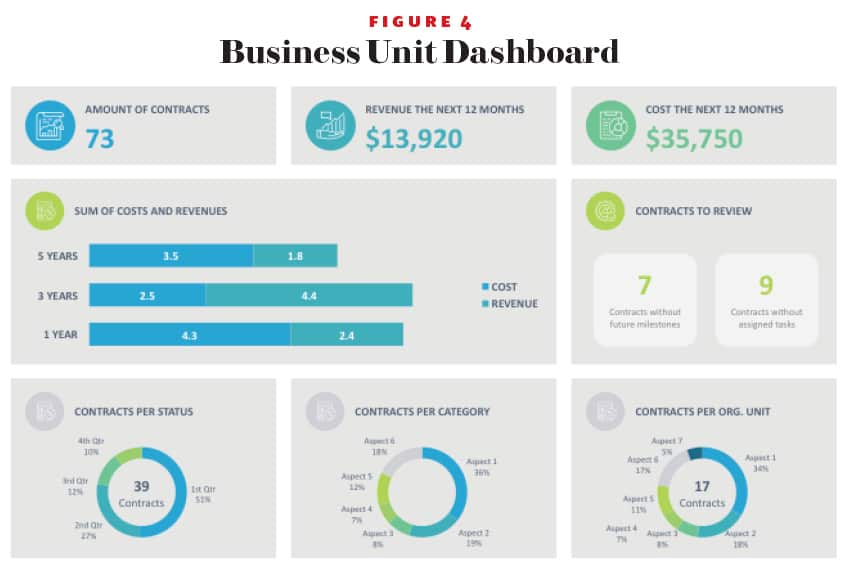

“Gamification promises to become an effective way to execute the tenets of connected leadership.”
Connected leadership creates an adaptive mindset. Every individual within an organization is armed with individual and aggregate scores driven by gamification. Fast-paced learning and adaptation become integral to the growth model of that organization, thereby increasing productivity especially during chaos. While in chaos, modeling capabilities becomes even more critical because of the limited bandwidth of workers.
By building the new capabilities needed to quickly adapt to market demand, chaos can be overcome, and success can be achieved. This results in two distinct outcomes. First, the team takes accountability for the program going live. Second, the process drives continuous improvement and closed-loop coaching and monitoring. Simulation of the capabilities is an important activity to achieve digital simulation. This creates an environment that accentuates and documents innovation that will fuel future growth of the organization. This drives new business, new revenue models, and a reimagined operating model.
As an organization embraces an innovative mindset, vision and collaboration enables an organization to be better prepared for unforeseen circumstances like COVID-19. Ultimately, this all leads to a connected value chain where the power of sharing and collaboration exists.
Leadership is ultimately responsible for an employee’s connection to its organizational goals. Creating a gamified framework built on Manufacturing 4.0 principals and the Delta framework promises to become the new normal for organizations during times of chaos. Truly connected leaders will recognize that chaos, when properly managed, represents increased opportunity. M
The Delta Leadership team contributed to this article.